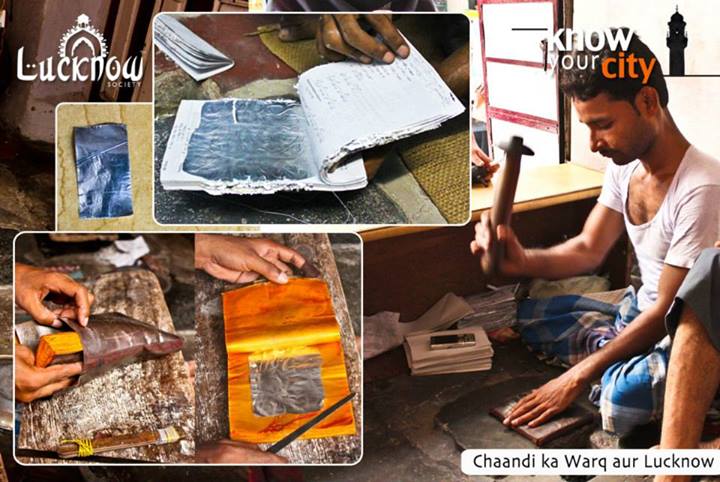Chaandi ka warq aur Lucknow
‘Chaandi ka warq’ is beautiful example of the Lucknawi Nazakat and Nafasat ! The word ‘warq’ has been derived from Arabic language meaning leaf. It is believed that the use of gold and silver in Indian delicacies dates back to the period of Ayurveda. Scientifically, silver acts as an effective anti-bacterial coating and increases shelf life of the product. Similarly, gold is preventive and has regenerative powers. The warq which enhances the taste of many delicacies in india, has seen its heritage being protected and propagated throughout India from our loved soil of Lucknow. If you are planning to visit a confectionary store, you are in for a silver treat. It shouldn’t be surprising that the delicacies are studded with edible silver sheets, locally called as Chaandi ka warq. It is also used to cover idols across the country. The Chaandi ka warq shops at Chowk have been able to survive and thrive even in the 21st century.
Lucknow is a major centres for warq production because of its predominant position in Mughlai cuisine. Chaandi ka warq is not only used for covering desserts like kheer, phirni, shahi tukda but also other items like paan, chavanprash, dry fruits, veg & non-veg dishes. It is also an important ingredient in ‘siwai’, an important dish during Eid. As beautiful it looks, the process of making Chaandi ka warq is tedious and involves physical labour. In Lucknow, while walking down from Akbari Darwaza in the Chowk area, one can witness the sound of constant hammering. This is the sound of the warq makers. Rassiullah, a warq karigar from Irshad Warqwale’s shop in chowk, explained us the intricacies of the craft. These thin sheets are achieved through constant hammering of small piece of 9 grams silver inside a leather pouch which is placed over granite stone. In total 165 layers of silver strips are placed between layers of leather and hammered for over 5 hours. The craft of making Chaandi ka warq involves precision and perfect eye-hand coordination while hammering. The importance of Lucknow in the preservation of this extremely tedious art, is second to none and we wish that these fankaars keep enhancing our delicacies for ages to come !
Credit : Intern – Nishita Banerjee

